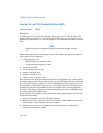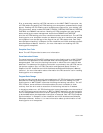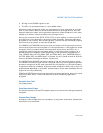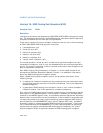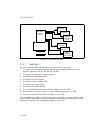
Vol. 3 6-65
INTERRUPT AND EXCEPTION HANDLING
Note that because SIMD floating-point exceptions are precise and occur immediately,
the situation does not arise where an x87 FPU instruction, a WAIT/FWAIT instruction,
or another SSE/SSE2/SSE3 instruction will catch a pending unmasked SIMD floating-
point exception.
In situations where a SIMD floating-point exception occurred while the SIMD
floating-point exceptions were masked (causing the corresponding exception flag to
be set) and the SIMD floating-point exception was subsequently unmasked, then no
exception is generated when the exception is unmasked.
When SSE/SSE2/SSE3 SIMD floating-point instructions operate on packed operands
(made up of two or four sub-operands), multiple SIMD floating-point exception
conditions may be detected. If no more than one exception condition is detected for
one or more sets of sub-operands, the exception flags are set for each exception
condition detected. For example, an invalid exception detected for one sub-operand
will not prevent the reporting of a divide-by-zero exception for another sub-operand.
However, when two or more exceptions conditions are generated for one sub-
operand, only one exception condition is reported, according to the precedences
shown in
Table 6-8. This exception precedence sometimes results in the higher
priority exception condition being reported and the lower priority exception condi-
tions being ignored.
Exception Error Code
None.
Table 6-8. SIMD Floating-Point Exceptions Priority
Priority Description
1 (Highest) Invalid operation exception due to SNaN operand (or any NaN operand for
maximum, minimum, or certain compare and convert operations).
2 QNaN operand
1
.
3 Any other invalid operation exception not mentioned above or a divide-by-zero
exception
2
.
4 Denormal operand exception
2
.
5 Numeric overflow and underflow exceptions possibly in conjunction with the
inexact result exception
2
.
6 (Lowest) Inexact result exception.
NOTES:
1. Though a QNaN this is not an exception, the handling of a QNaN operand has precedence over
lower priority exceptions. For example, a QNaN divided by zero results in a QNaN, not a divide-
by-zero- exception.
2. If masked, then instruction execution continues, and a lower priority exception can occur as
well.




